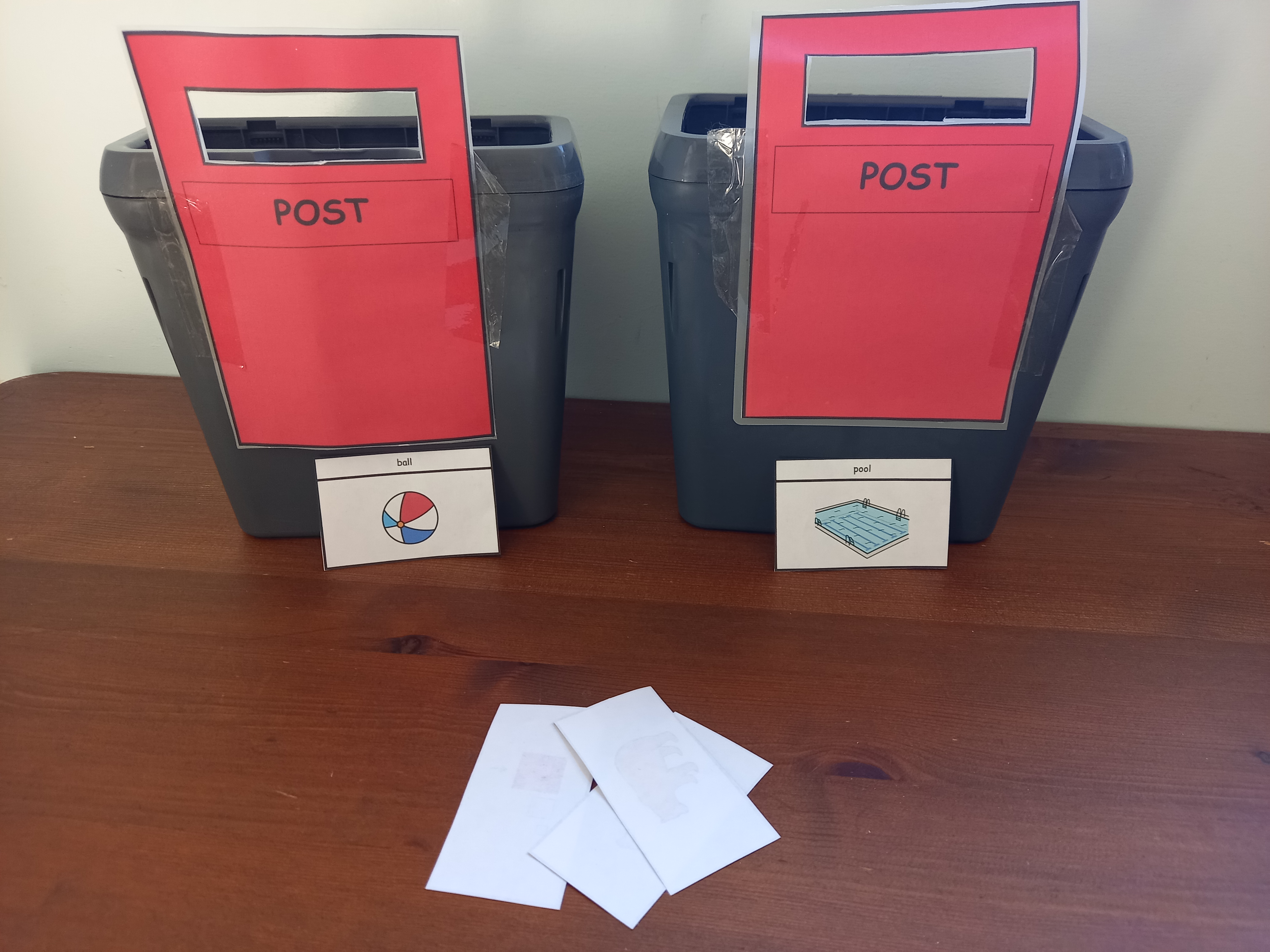Search
User login
Topic “With friends/relatives”
Hearing the difference between sounds in words (auditory discrimination)
| Activity/strategy name and materials required | How to do the activity | Key principles for doing the activity and comments |
|---|---|---|
| Post it! Materials: - Copy of printable minimal pairs words for the target sounds – if you are unable to print, you could draw some pictures using the pairs of words on the list. - 2 boxes/containers – you could make your own post boxes using this template and sticking it to a cardboard box. - Paper cut into envelope shapes or click here for a printable template. | Instructions: 1. Choose one pair of words, e.g. ‘door’ and ‘saw’ and attach one to the front of each box/container. 2. Explain to your child that each of the boxes has a word with a different sound. You are going to say a word and they have to post a letter into the right box. 3. Show your child how to do this. 4. Say the words in a random order so your child has to listen to the difference between the word and choose the correct one. 5. If your child gets the wrong word, talk it through with them and show them which sound you used. 6. Swap minimal pairs after a while, e.g. change ‘door’ and ‘saw’ to ‘duck’ and ‘suck’.
| |
| Racing Cars - 2 x pieces of paper and pen - 2 x toy cars or vehicles - Copy of printable minimal pairs words for the target sounds – if you are unable to print, you could draw some pictures using the pairs of words on the list. | ||
| Block Towers - some wooden/plastic building blocks. - Copy of printable minimal pairs words for the target sounds – if you are unable to print, you could draw some pictures using the pairs of words on the list.
|
Games and activities to help develop social skills
It can be difficult for some children to identify and understand social cues. To help develop the social growth of these children, there are lots of fun ways to help improve their social skills.
Support Commtap to keep it online
Thank you for visiting Commtap.
Please read this message as it is extremely important.
- Visitor donations mean we can continue to host over 1,000 free activities to support speech, language, and communication development.
- Visitor donations mean we can continue to provide free resources to address a wide range of communication needs, including limited speech or language, interaction challenges, and needs associated with conditions such as developmental language disorder, autism, and cerebral palsy.
- Visitor donations mean we can continue to provide resources to support the work of speech and language therapists, teachers, teaching assistants, parents, and carers.
- Visitor donations mean we can continue to provide the free key word sign dictionary (bks.org.uk) which has over 2,000 Makaton and Signalong signs.
We know that not everyone is able to afford to pay to access these resources, however, if you can, please make a donation to keep the site going.
Thank you
Google ads on this page are provided by Google Adsense - and their presence does not imply any endorsement by Commtap. Report a problem with an ad on this page. Log in (for free) to avoid seeing Google ads.

